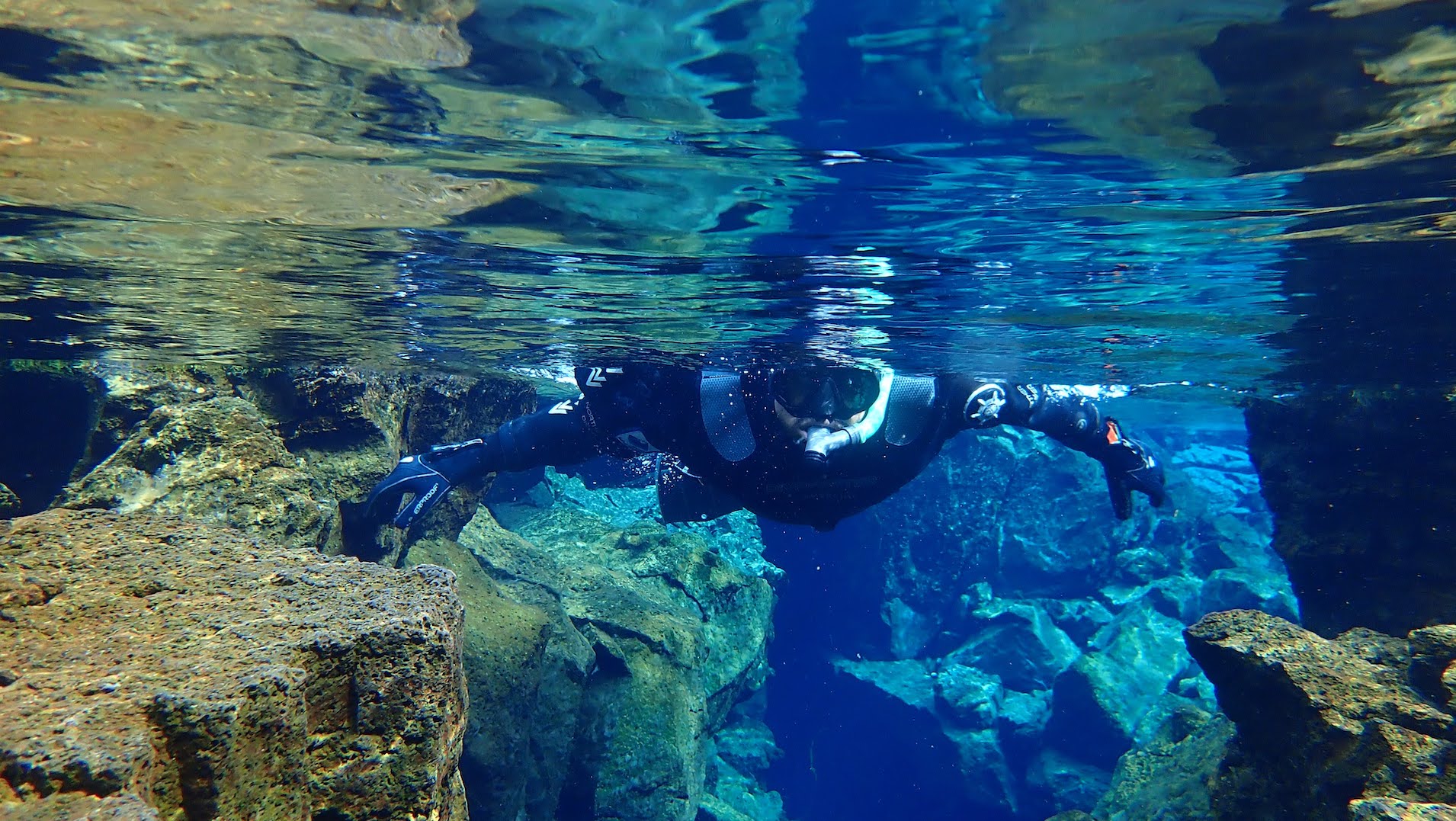
Exploring the Land of Fire and Ice
Trekking up a massive glacier. Snorkeling in crystal-clear glacier melt. Witnessing the creation of a lava field around a volcano. Spotting seals on icebergs. Glimpsing a shimmering aurora. Driving through breathtaking landscapes at every turn. Learning from giants in the field of glaciology. Experiencing life in the most peaceful country in the world. I was well aware I was about to step into the experience of a lifetime, made possible by the Newman Exploration Travel (NEXT) award. But nothing could prepare me for the staggering beauty of Iceland, to be able to witness nature at its finest.
Growing up in tropical India, I had long been fascinated by the far, icy vestiges of the planet. Gazing endlessly upon maps of the region, I dreamt of setting foot there. In my graduate research, I began uncovering the effect on snow reflectivity of the deposition of certain atmospheric particulates. When I first learned of the NEXT call for applications in the spring of 2022, I instantly knew I had the perfect destination that would blend my academic interests with my deep-rooted exploratory streak.
Iceland is unique because of its location on the Arctic circle and at the boundary of two tectonic plates. This allows the island to be both endowed with several glaciers as well as have diverse landscapes constantly being shaped by geologic activity. The result is a paradise for nature lovers: a land abounding with every kind of natural feature imaginable which are also relatively accessible. As I was planning my trip, I was astounded by the sheer number of places to visit and excited by the opportunities to expand my knowledge. To make optimum use of limited time, I split my exploration into three distinct phases: the survey, the learning, and the deeper dive.
The Survey
As I arrived at the airport in Keflavik on a dewy August morning, I took a sharp breath and took in the chilly Arctic air. I was here at last—after several months of anxious itinerary planning, applying for a visa, figuring out logistics and shopping for cold-weather gear. To say I was excited would have been an understatement.
The first few days were devoted to gathering bearings and exploring a popular circuit called the Golden Circle. Pristine lakes, moss-covered mountains, gurgling streams, roaring waterfalls, spectacular geysers—one could see them all within hours of one another at Þingvellir National Park, a UNESCO World Heritage Site. I began by snorkeling in the Silfra Fissure lake, an underwater rift fed by glacier melt and where one can touch the North American and Eurasian tectonic plates at the same time! As I had never snorkeled before, I ended up gulping in a lot of lake water—but this was nothing to worry about since the water was so clean as to be drinkable!
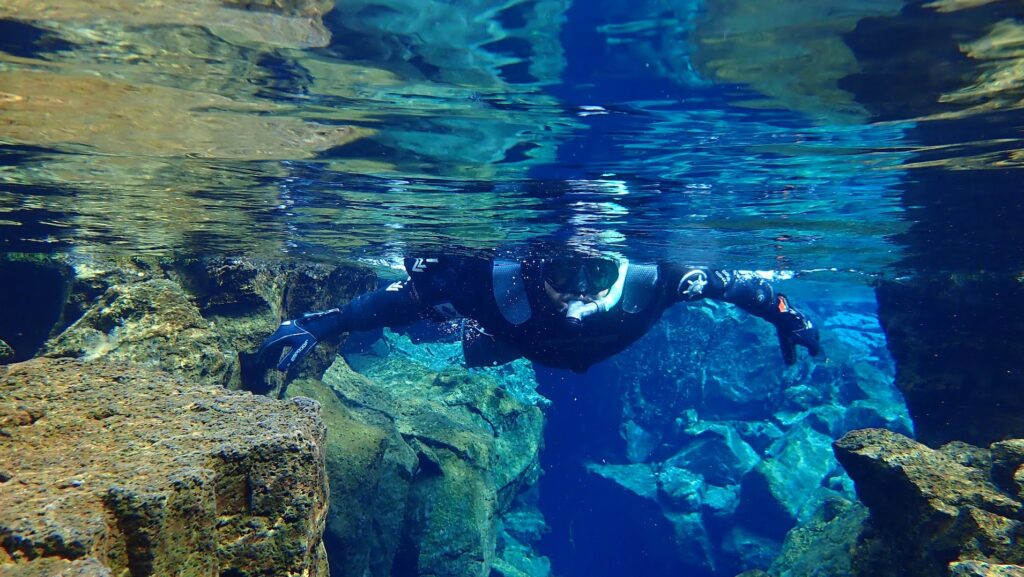
Soon after, I visited the Kerið crater lake, another landmark that arose from the geological activity in the area.
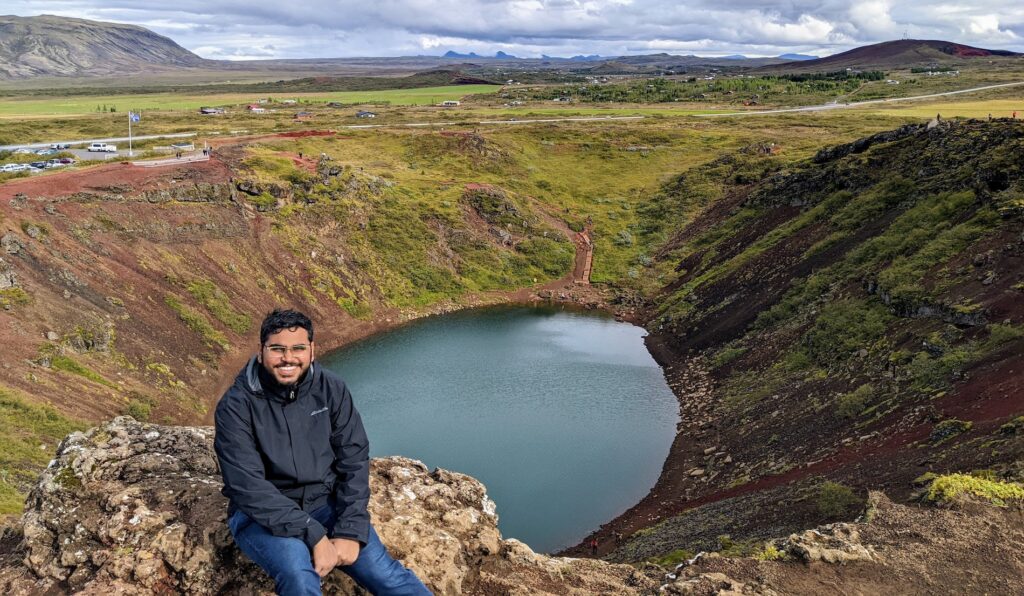
Of the several beautiful waterfalls I visited, Skógafoss stood out in particular for its charm which can only be described as being fairytale-like. Also fed by glacial meltwater originating in the Icelandic Highlands, this waterfall was the site of a popular Bollywood music video.
Along the way, I stayed at a bucolic Icelandic farmhouse for the night and grabbed some lamb sandwiches at a local grocery store. Being one of the most expensive countries in the world, these relatively inexpensive and delicious sandwiches quickly became my staple. I later learned that Icelandic lambs are world famous, part of the reason for which is that they have been “roaming free since 874,” as emphasized by a popular tagline I saw often.
Quite serendipitously, one of Iceland’s many volcanoes, Fagradalsfjall, began erupting just a few weeks before my trip. Modifying my itinerary and taking a three-hour hike through rugged terrain, I managed to glimpse the final embers of smoldering lava from the eruption. Over two weeks, the eruption had filled up an entire valley with freshly hardened volcanic rock–and it was fascinating to see the landscape evolving through natural processes in real-time.
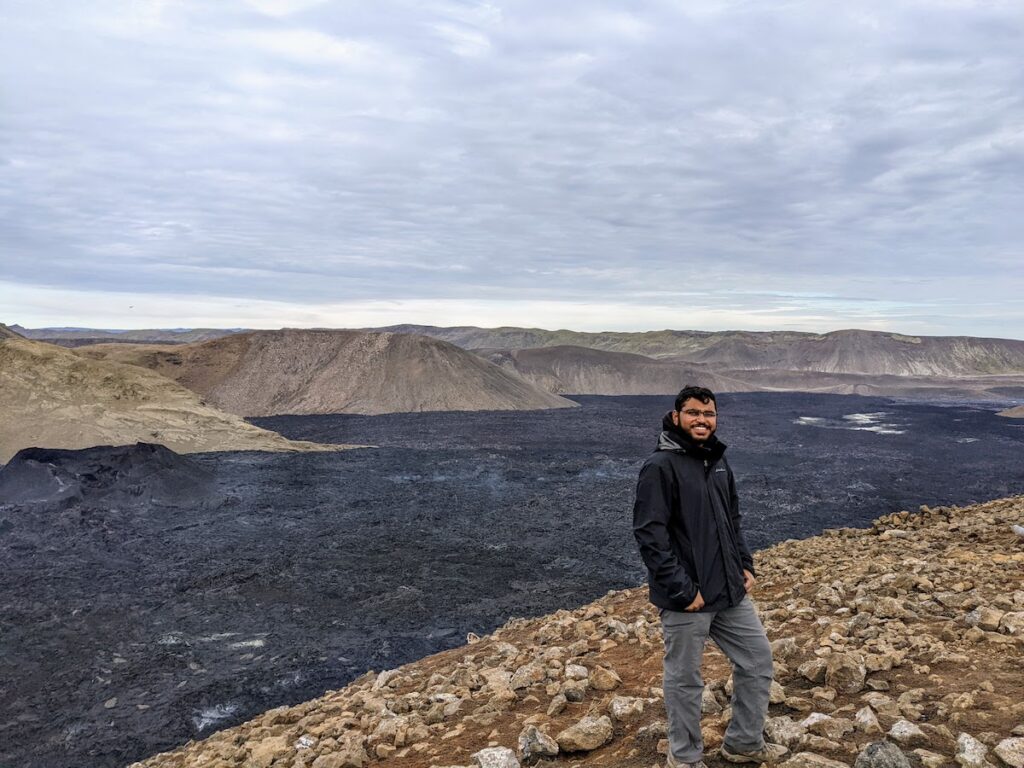
The surveying phase of my trip was capped by a visit to the Vatnajökull glacier and its lagoon, Jökulsárlón. One of the motivations for my trip was to see how glaciers have been changing amidst climate change, and there could not have been a better place to witness the evidence. My guide for a boating tour of the lagoon showed me the point where the snout of the glacier had been just a decade ago. And then we sped further into the lagoon for what seemed an eternity before reaching the location where the glacier snout presently was. As we watched a seal lazily resting on an ice floe, a thunderous crack rent the air and a massive piece of the glacier chipped off, splashing into the lagoon and joining the numerous icebergs floating away. It was apparent that a transformation was steadily underway—and I was about to learn more about it in the capital city, Reykjavík.
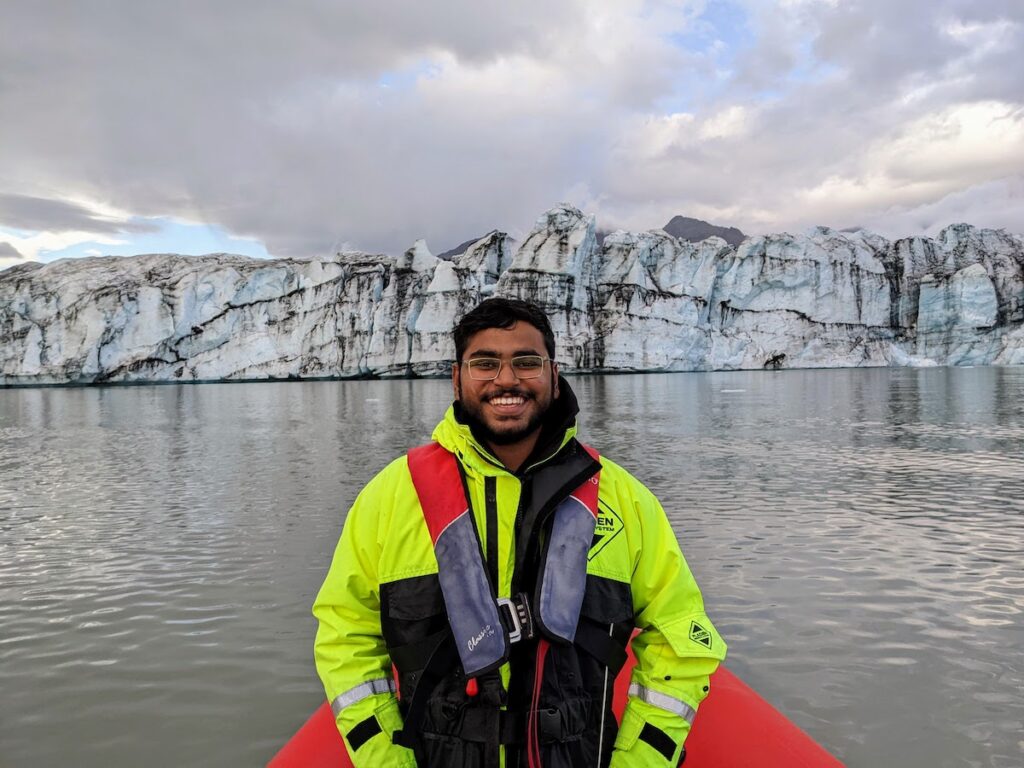
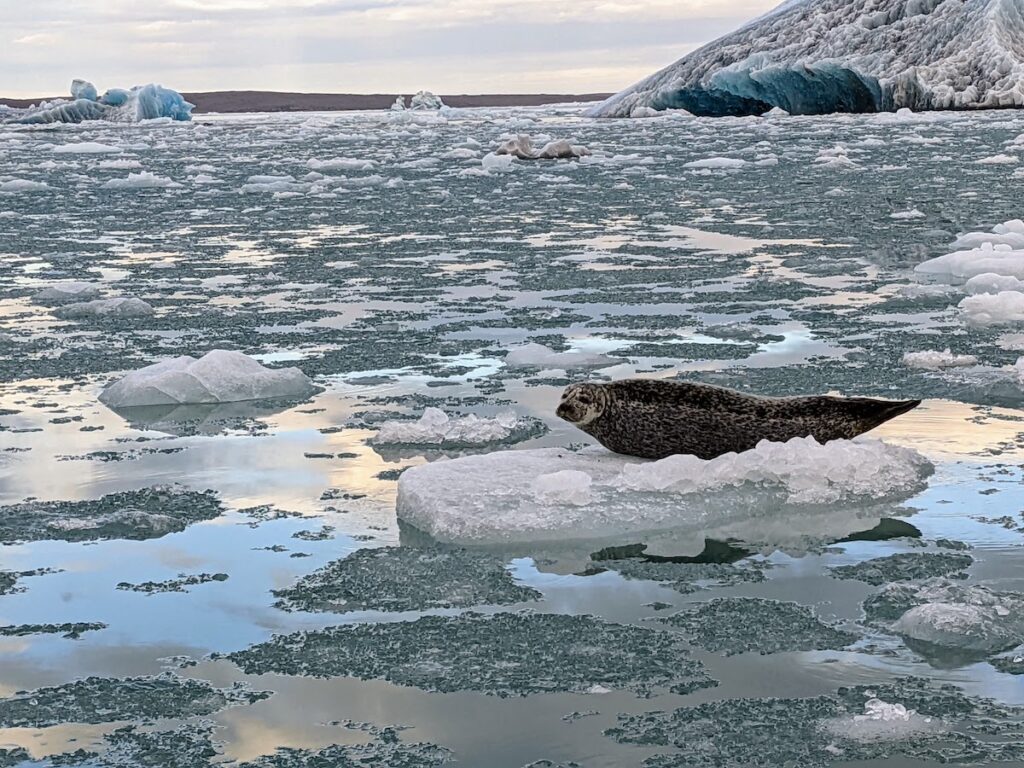
The Learning
Reykjavík is a charming city that is not just the capital of Iceland– it is the country’s major city and cultural center with three-fifths of Icelanders residing in the capital region. I was going to be here for nearly a week as a participant in the Cryosphere conference. This academic conference was bringing together leading researchers and students working on everything related to earth’s cryosphere—from snow and permafrost to glaciers and sea ice—and I was excited to deepen my knowledge.
I attended talks on diverse topics, listening to experts on permafrost thawing, Antarctic ice sheets, glacial flooding in the Himalayas, and much more. From the presentations and talks, I understood that there are several gaps in the knowledge related to predicting the trajectory of melting in the cryosphere—critical to estimating future sea level rise as well as modeling the earth as a system—which includes the atmosphere, ice, and oceans combined.
I was able to meet researchers working at the intersection of ice and atmosphere– studying the snow albedo reducing effects of the deposition of light-absorbing aerosols. Exchanging notes with these individuals from around the world, on a topic that I shared a deep interest in, was exhilarating and also helped me gather new insights for my own work.
It being my first ever in-person conference experience, I relished the opportunity to network and make new friends. I had wide-ranging conversations with diverse people, both at the conference and at the hostel I stayed at. And during the evenings, I had the chance to explore Reykjavík on foot and electric scooter. Wandering through hip pedestrian streets and zooming through quaint neighborhoods, I enjoyed every moment of exploring the city. Suffice it to say, Reykjavík has become one of my favorite cities by a wide margin.
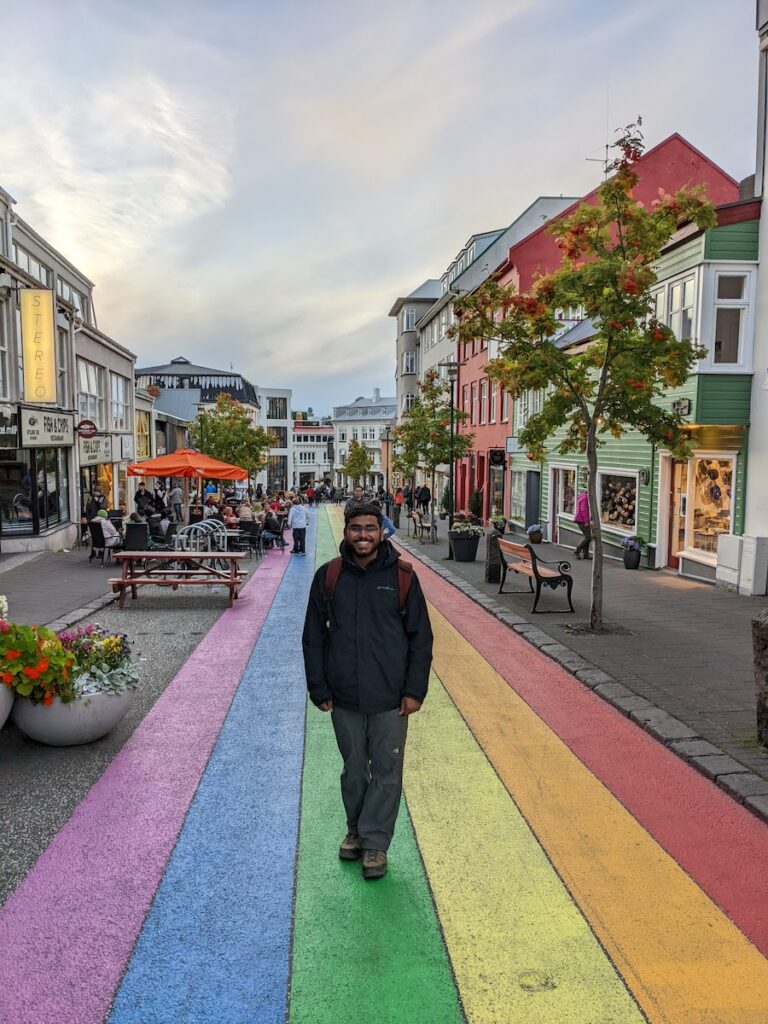
The Deeper Dive
I was now ready to undertake a more intense journey around Iceland. Along with a travel companion, I rented a camper van and hit the road. Over a week, I planned to circle the island clockwise along its famed ring road, stopping along the way to experience the best of Iceland’s nature, and resting at campgrounds overnight.
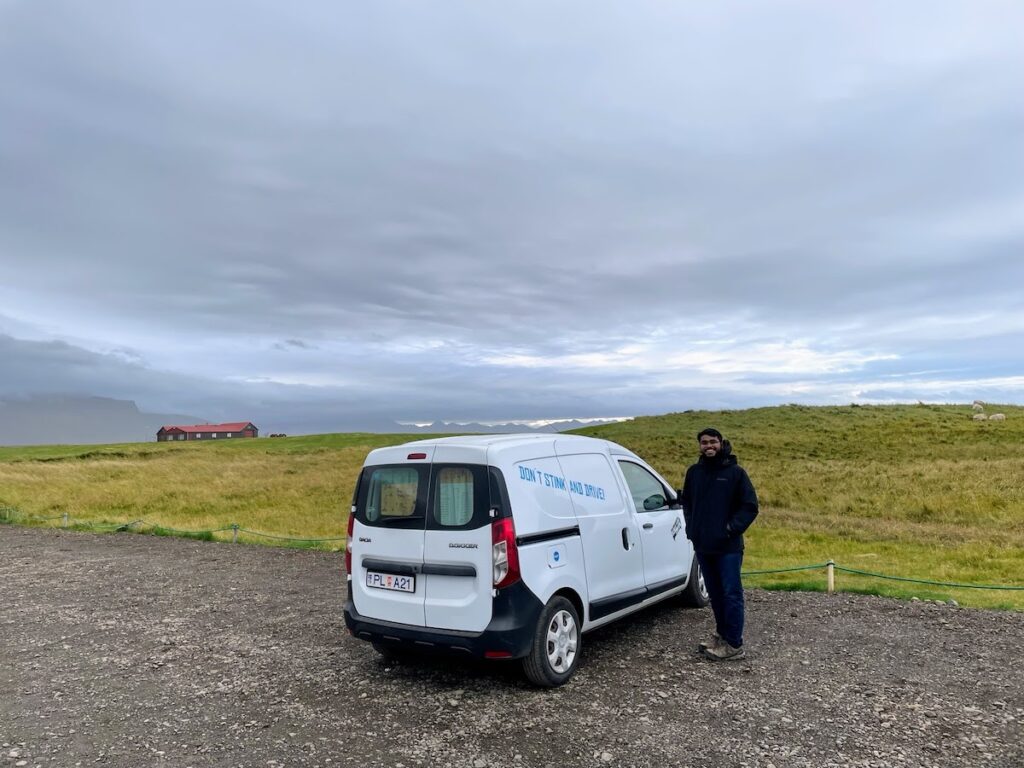
On the first day was the Snæfellsnes Peninsula in western Iceland. Also called “Iceland in Miniature” for its diversity of landscapes, the peninsula offered much to see.
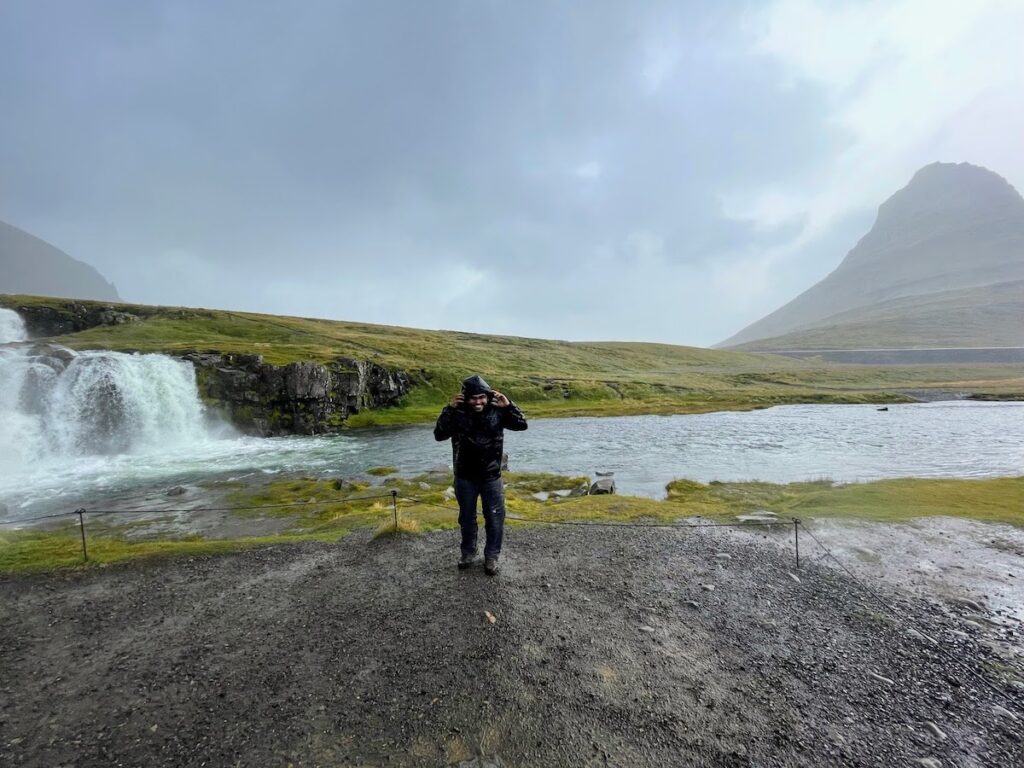
Moving on to the north coast, I caught my first glimpse of the Arctic Ocean. The north coast was full of striking terrain, with windswept peninsulas and deep fjords.
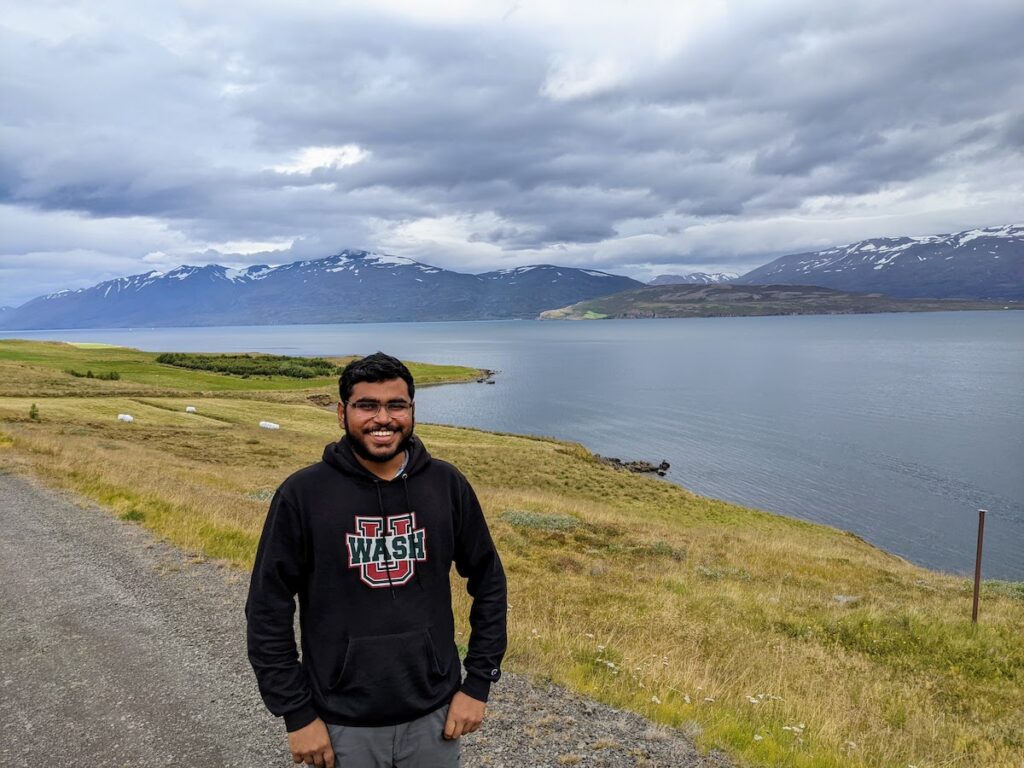
Soon after, it was time to go inland to Mývatn, a volcanic region famous for landscapes that seemed to be straight from other planets. Among the sites I saw were boiling mud pots, a huge mountain crater, and several hot springs. I even got to take a dip in Mývatn Nature Baths, a popular naturally heated lagoon.
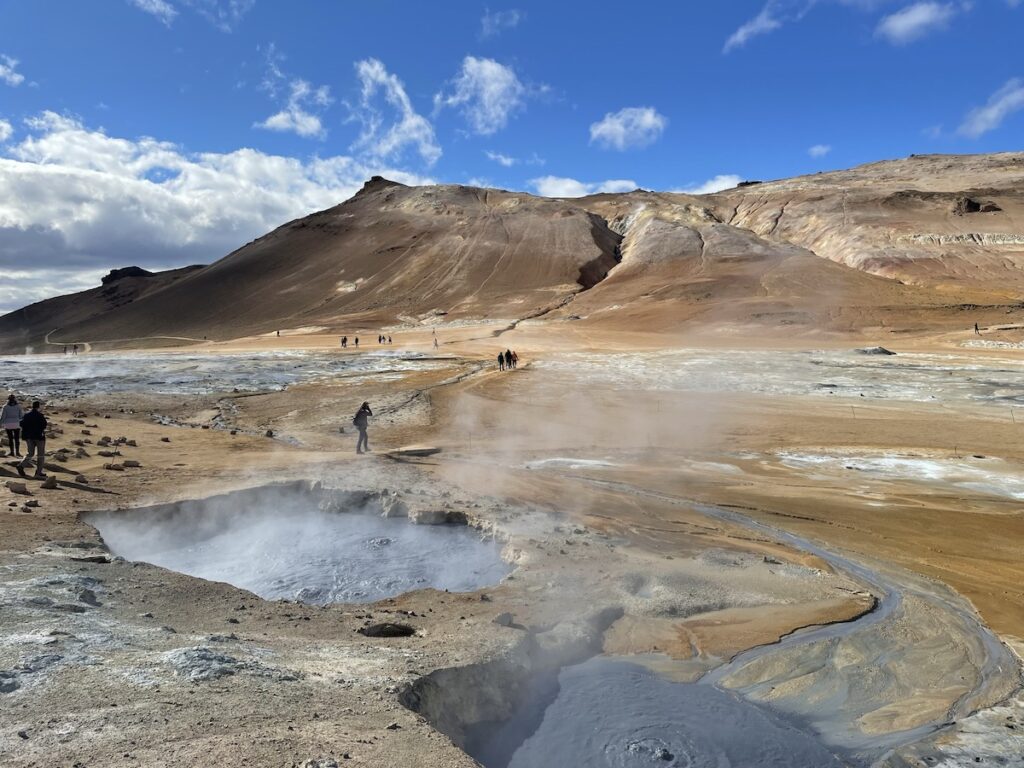
I was now around halfway around the island and at the highest latitude during the trip– 66°N. Reaching the Ásbyrgi canyon campground late on a clear starry night, I witnessed nature’s stunning display of shimmering lights—the aurora borealis. I was awake until the first rays of daybreak, taking in the spectacular show, unfazed by the freezing temperature. In the morning, I hiked within the horseshoe-shaped canyon, which was shaped by an ancient glacial flood.
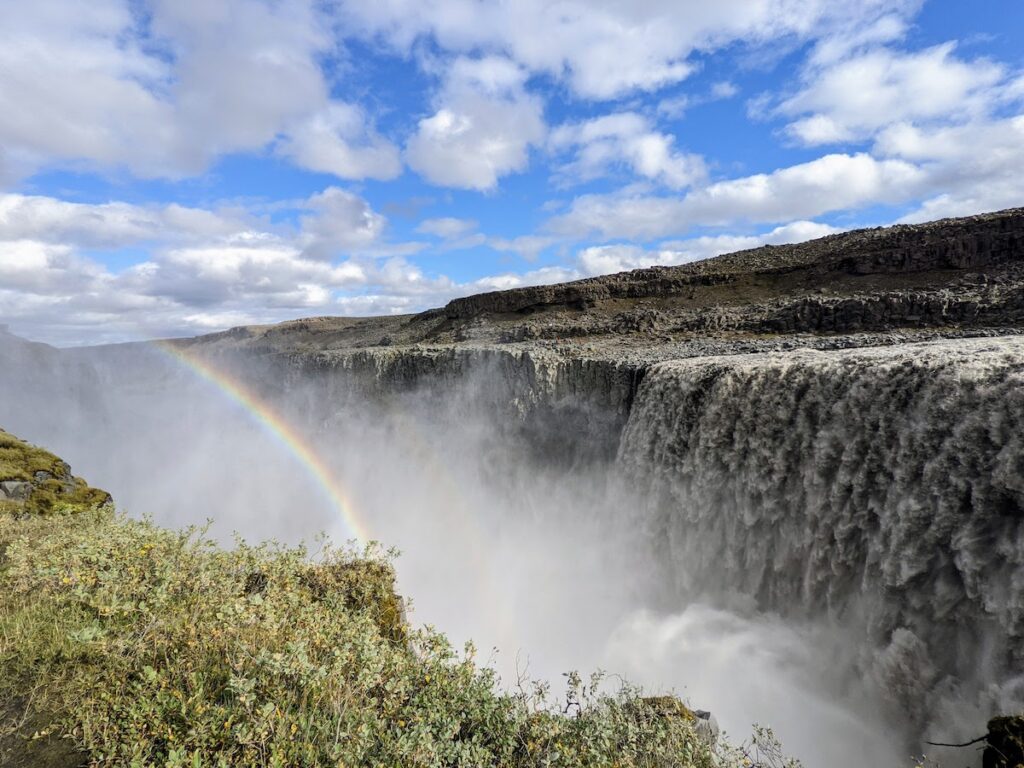
I then continued onwards to Iceland’s eastern coast, where I encountered more glacier-carved coastlines and camped next to the fjord of Berufjörður. The next day, I was back on the southern coast, where I had been a few weeks prior during the survey phase. With an eye to engaging in a deeper exploration of the glaciers there, I camped at the remote Þakgil (pronounced Thakgil) campsite and ventured on a 14 km hike, climbing more than 1800 feet in altitude through verdant green valleys, rocky slopes, and mossy alpine fields abounding with brooks. This was the most strenuous hike I had ever undertaken—but in the end, it was completely worth the effort. I was rewarded with a view that I could never have imagined until I had seen it—across a valley, a massive glacier was sitting atop a sheer vertical cliff, with waterfalls spouting out from the interface between the two, and chunks of ice sporadically crashing down into the valley below. In the U-shaped valley was another glacier, which sloped gently onwards into a second, distant valley. It was absolutely breathtaking.
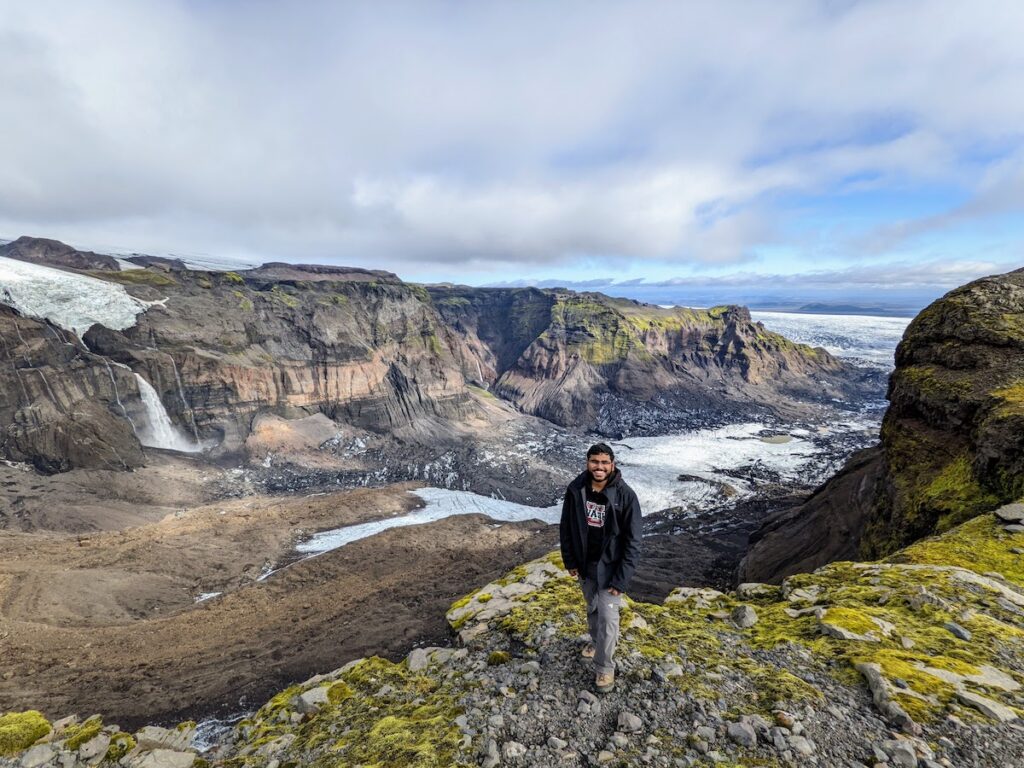
Having seen so many glaciers from near and afar, I was now yearning to actually set foot on one. Soon enough, I began a hike up the Sólheimajökull glacier, a sloping sheet of ice nestled between two mountains. I had previously been on snow, but ice was a different experience altogether. Crampons attached to my shoes and equipped with specialized gear, with the help of a guide I navigated icy crevasses, pools of meltwater, and heaps of volcanic ash. Much of this ash was from the 2010 Eyjafjallajökull eruption, surfacing now in layers with the summer melting. After reaching a significant altitude up the glacier, I sat back and beheld this vast expanse of ice. It was truly out of this world.
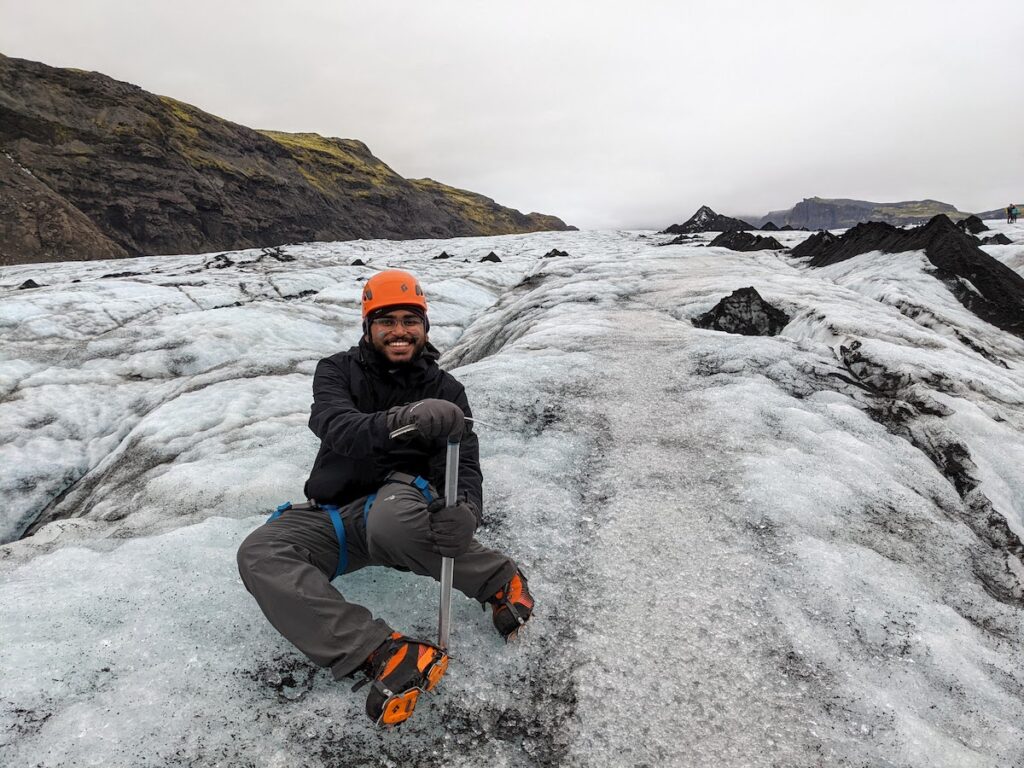
After quite a bit of demanding exertion, it was now time to relax and wrap up the trip—but not before one last hike. Iceland has some of the best geothermal pools and rivers in the world, so I could not let myself pass up the opportunity to hike up to the Reykjadalur Hot Springs and soak in the thermal river there. I stayed there until well after sunset, wading around in the cozily warm waters and chatting with locals for whom this was just a regular evening out. The next morning, I brought the trip to a befitting conclusion by relaxing at the world-famous Blue Lagoon.
As I bid farewell to the land of fire and ice, I promised myself I would return—not just because I couldn’t see all of it on this trip, but also because I wanted to experience the awe and wonder once again.
Concluding Thoughts
MY NEXT-funded exploration was life-changing. The places I saw, the people I met, the knowledge I gained, and the experiences I had—all positively transformed me. I learned invaluable lessons related to the art of traveling—everything from planning to logistics to communication. Above all, the journey gave me great joy and was immensely fulfilling. I will always remain deeply grateful to the Newman family for funding the generous grant that made this journey off the beaten path possible.
I left Iceland with a deeper admiration for the Earth, its nature, and the people who are studying and trying to preserve it. I was able to gather new insights for my research, expand my network and broaden my experiences. I became aware of how fragile the Earth’s physical systems and ecosystems are, and what the impacts of human activities are beginning to look like, even in remote corners of the world. This exploration deepened my resolve to be part of the positive change—to help preserve our planet for us, and for future generations to come.